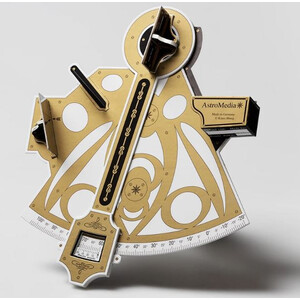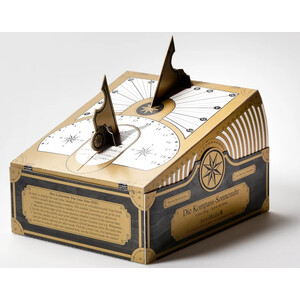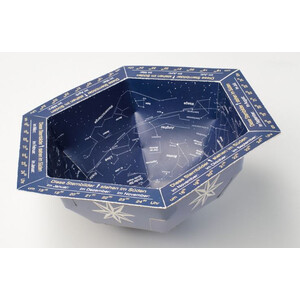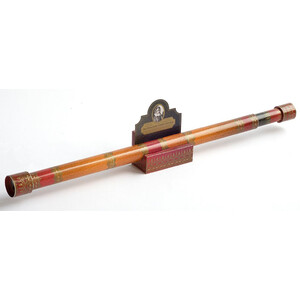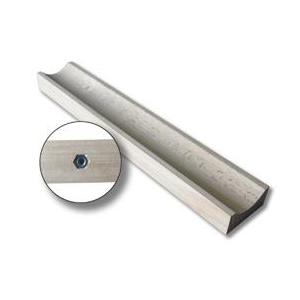Il quadrante a pendolo misura gli angoli di elevazione dei corpi celesti, dei punti del terreno e degli edifici.
Il quadrante è uno strumento astronomico conosciuto fin dall'antichità babilonese. Con l'aiuto di un filo a piombo, indica l'angolo tra la linea di vista di un punto mirato, ad esempio una stella, e il punto dell'orizzonte direttamente sotto di essa. Questo viene definito come l'altitudine o l'angolo di elevazione di questo punto o stella. Grazie a una divisione trasversale della scala, la misurazione è precisa a circa 10 minuti d'arco. È dotato di un tubo sonda e di un'impugnatura. Questo semplice instrumenti è il predecessore storico del bastone di Giacobbe e del sestante.
Come si effettuano i coltelli: Si determina qualsiasi punto nel cielo (eccetto il sole!) o nel paesaggio puntando al punto attraverso il tubo. Tenga il filo a piombo sul quadrante. Può leggere l'angolo dove il filo passa sopra la scala dei gradi.
Non miri mai direttamente al sole! Questo può causare danni irreparabili ai suoi occhi! Se desidera comunque determinare l'altezza del sole, può farlo come segue: Punti l'estremità destra dell'asta di livello verso il sole e tenga l'altra estremità vicino a una superficie inclinata che catturi l'ombra del quadrante, ad esempio il palmo della mano. Quindi ruoti il quadrante finché la sua ombra non diventa una linea e il sole può illuminare il tubo sonda senza ostacoli. Ora il filo a piombo sulla scala dei gradi mostra l'altezza angolare del sole.
- Foglio di cartone stampato da ritagliare e assemblare (DIN A4)
- Con istruzioni di montaggio dettagliate
- Dimensioni dell'articolo finito: circa 20 x 20 cm
